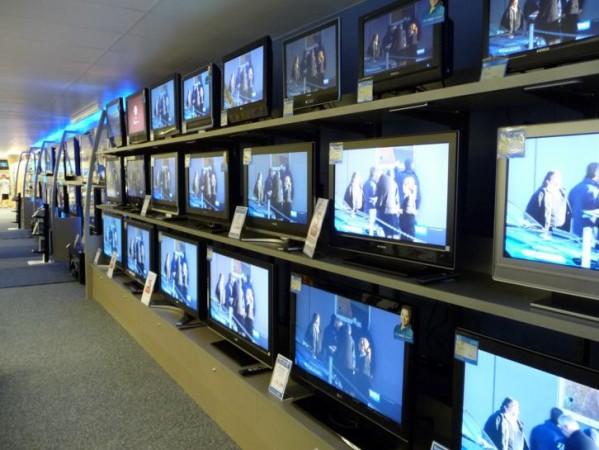
By 2020, Indian media and entertainment (M&E) industry is poised to grow to Rs. 2.26 trillion in size from Rs. 1.16 trillion in 2015, according to a KPMG report titled "The Future: Now Streaming."
Over the same time-frame, advertisement revenue would contribute nearly half of the M&E's revenue at Rs. 99,400 crore from the existing Rs. 47,300 crore.
Talking about the growth rate (compounded annually) over a five year period, both the industry and advertisement revenues are expected to clock growth of 14.3 percent and 15.9 percent, respectively.
The report, unveiled at an event called the FICCI Frames, outlined the present size of the industry and its ad revenues, while also making a projection for the same in 2020. (See Table)
| In Cr. | Market Size 2015 | Market Projection 2020 | Growth Rate (CAGR) 2015-20 |
| Television | Rs 54,220 | Rs 1,09,760 | 15.1% |
| Rs 28,340 | Rs 41250 | 7.8% | |
| Films | Rs 13,820 | Rs 22,730 | 10.5% |
| Radio | Rs 1,980 | Rs 4,330 | 16.9 % |
| Digital Ad | Rs 6,010 | Rs 25,520 | 33.5 % |
| Others | Rs 11,630 | Rs 22,410 | -- |
| Total | Rs 1,16,000 | Rs 2,26,000 | 14.3% |
| In Cr. | Advertising Revenue: Size 2015 | Advertising Revenue Projection 2020 | Growth Rate (CAGR) 2015-2020 |
| Television | Rs 18,130 | Rs 36,450 | 15.1% |
| Rs 18, 930 | Rs 28,580 | 8.6% | |
| Radio | Rs 1,980 | Rs 4,330 | 16.9% |
| Digital Ad | Rs 6,010 | Rs 25,520 | 33.5 % |
| Others | Rs 2,250 | Rs 4,520 | -- |
| Total | Rs 47,300 | Rs 99,400 | 15.9% |
Others: Music, Out of Home (OOH), Animation and VFX, Gaming
Television
Though poised for a healthy growth of 15 percent over the next five years, a Mint report pointed out that subscription revenue for the medium term would remain low. While the Phase 3 digitisation of cable TV failed to meet its stated deadline, the report added: ".... benefits of phase 1 and phase 2, particularly on ARPU (average revenue per user) have failed to materialise due to a number of on-ground challenges across the distribution chain. This resulted in a slowdown in subscription revenue growth in 2015. Our expectations over the next five years have also been toned down to reflect this delay."
The daily reported that the growth of vernacular press too was limited over the last year and so was the rural demand for FMCGs (fast moving consumer goods), which was reflected in lower advertising revenue rates. However, with a good monsoon likely this year and an increased expenditure on rural infrastructure in budget 2016, the print media is expected to bounce back, it added.
One of the important aspects that could spur this traditional media towards growth could be the hyper localisation of advertisements catering to tier I and tier II cities and rural areas, the report said. With low internet penetration, it said: "the motive of national players (Big Dailies) entering new markets with more local editions is to provide targeted reach to advertisers."
Radio
As far as radio is concerned, the daily reported that with the licensing of new stations in the phase-3 allocation and the consolidation that has happened in the industry, radio has transformed from a "coverage" medium to "reach" platform. It noted that the big players in the FM radio medium are operating at high ad inventory utilisation levels, which, in the background of growing advertisers' interest, will help push ad rates up.
Digital Advertisements
The report highlighted that the digital ad sector poised for a 33.5 percent growth is shifting towards video and mobile advertising, given the increasing numbers of mobile users and improving digital infrastructure. It added that digital advertisement is expected to be Rs 25,500 crore industry, contributing 25.7 percent of total ad revenues by 2020.
Talking about the OTT, or over-the-top, platforms such as WhatsApp, Skype, Viber, etc., which offer huge advertising opportunities, the report noted: "While there is significant level of interest in building out OTT platforms, viability in the short term remains a concern given bandwidth constraints, high cost of customer acquisition, dependence on advertisement led models and high cost of data access."
Things are expected to change with the large scale roll-out of 4G, however. A 4G market, reportedly the most competitive of all markets, would also lead to lower data costs. Given the increasing penetration of smartphones, the report said: "We expect that consumers will become used to viewing content beyond the television screen, paving the way for digital dedicated content and innovative monetization models."

















